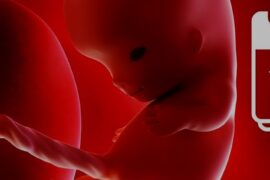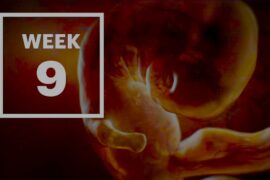Twin Pregnancy
Twin pregnancies come with a unique set of risks and considerations. For starters, they carry an increased risk of preterm delivery, so depending on the risk factors and the provider’s comfort level, a different provider may be needed. In addition to this, more weight gain and rest is recommended for twin pregnancies than single pregnancies due to the higher levels of pregnancy hormones that can lead to more intense symptoms.
Thinking of having twins? Discover the unique changes you can expect to experience during a twin pregnancy, including advice on dealing with your growing belly!
What are the signs of a twin pregnancy?
Twin pregnancies can be a thrilling experience, but they also come with their own unique set of signs and symptoms. The most obvious sign of a twin pregnancy is feeling fetal movement in more than one area. This is usually felt earlier than with a singleton pregnancy, as the babies have less room to move around. Fundal height, or the measurement from the top of the uterus to the pubic bone, may also be greater than gestational age and there may be rapid weight gain due to carrying two babies. High levels of hCG or AFP (alpha-fetoprotein) are also common in twin pregnancies and hearing more than one heartbeat on a fetal Doppler can confirm it.
In addition to these physical signs, twin pregnancies cause an exaggerated version of typical pregnancy symptoms such as morning sickness, fatigue, and a larger baby bump. It is important for expecting mothers to take extra care during this time and get plenty of rest in order to manage the extra hormone changes associated with carrying two babies.
How is a twin pregnancy confirmed?
A twin pregnancy can be confirmed with prenatal ultrasound. This imaging technique uses sound waves to produce images of the uterus and can show whether there are two fetuses present. Ultrasound is usually done around the 12th week of pregnancy, but it may be done earlier if a twin pregnancy is suspected. Other signs that may indicate a twin pregnancy include early fetal movement in more than one area, fundal height greater than gestational age and rapid weight gain, high levels of hCG or AFP, and hearing more than one heartbeat on a fetal Doppler.
It is important to confirm a twin pregnancy as soon as possible so that proper care can be taken for both babies. Twin pregnancies often require extra monitoring and care due to the increased risk of complications such as preterm labor, low birth weight, and other health issues. With early diagnosis and appropriate medical care, most twins have healthy outcomes.
What are the different types of twins?
Twins are two children born at the same time from the same pregnancy. There are two main types of twins: fraternal and identical. Fraternal twins, also known as dizygotic twins, occur when two separate eggs are fertilized by two different sperm cells in one cycle. These twins have their own placenta and amniotic sac and may or may not be of the same gender.
Identical twins, also known as monozygotic twins, come from a single fertilized egg that has split into two embryos. They share an amniotic sac and usually share a placenta, and they are always of the same gender. Conjoined twins are extremely rare and occur when an identical twin embryo does not fully divide, resulting in the babies’ bodies being fused together.
The type of twinning is determined by genetic factors that influence how many eggs are released during ovulation and how many sperm cells fertilize them. It is important to note that there is no way to predict the type of twins a woman will have before they are born.
How can I stay comfortable with my pregnant with twins belly?
Pregnant with twins can be a challenging experience, both physically and emotionally. Many women experience back pain, foot pain, and limb pain that can make it difficult to stay comfortable. Twin-iversity’s “What to Do When You’re Having Two” provides a great resource for life with twins from pregnancy through the first year. They also have a list of essential twins gear to ensure you have everything you need during your pregnancy.
Every woman’s pregnant with twins belly is different and unique, so Twin-iversity offers tips to help pregnant women get comfortable. These include wearing supportive clothing, using pillows for support while sleeping or sitting, and taking breaks throughout the day. Additionally, Twiniversity provides free podcasts for twin parenting content that can provide valuable information on how to stay comfortable during pregnancy with twins. With these resources available, pregnant women can find ways to make their pregnancies more manageable and enjoyable.
The risk factors for twins
There are several risk factors for twins, including hereditary factors, certain medical conditions, and the use of fertility treatments. Identical twins can also be of different genders.
How are twins delivered?
Twins are a special and unique experience for any family, but the delivery process can be different than with a single baby. In most cases, a cesarean birth (c-section) is recommended due to the higher risk of complications associated with twin pregnancies. However, depending on the position of the babies in the womb, it may be possible to deliver twins vaginally. It’s important to talk to your provider about all your options so you can make an informed decision that’s best for you and your babies.
When it comes to twins, there are two types: fraternal and identical. Fraternal twins come from separate fertilized eggs and can be either the same or opposite genders. On the other hand, identical twins come from a single fertilized egg that has split and are always the same gender. Identical twins also share an amniotic sac and usually share a placenta as well. With both types of twins, prenatal visits should be more frequent to monitor the health of both babies.
It is important to remember that every pregnancy is different, and it’s important to talk to your provider about any concerns you may have. With the right care and support, you can have a safe and healthy twin pregnancy.
FAQs
Dizygotic or fraternal twins are the most common type of twin pregnancy, accounting for approximately three-quarters of all twins. Dizygotic twins occur when two eggs are released from the ovary and are fertilized by two sperm. Each is a genetically unique individual.
Monozygotic or identical twins occur when a single fertilized egg divides into two genetically identical embryos. Identical twins are rarer than fraternal twins and occur in only about one in 250 births.
Dizygotic or fraternal twins are two genetically unique individuals who share the same uterine space and placenta during their development and are born together. Monozygotic or identical twins are two genetically identical individuals who share the same uterine space, but do not always share the same placenta.




